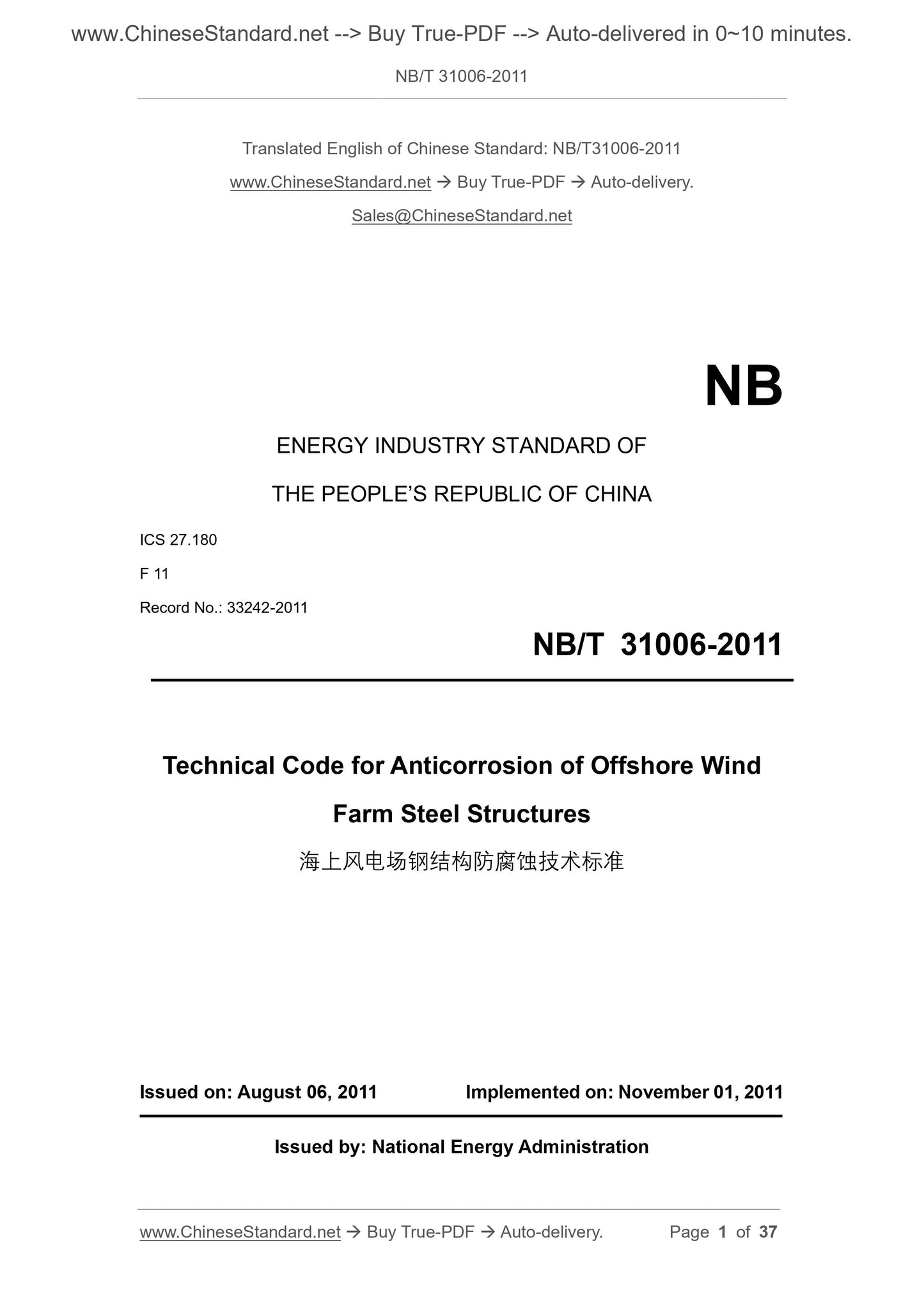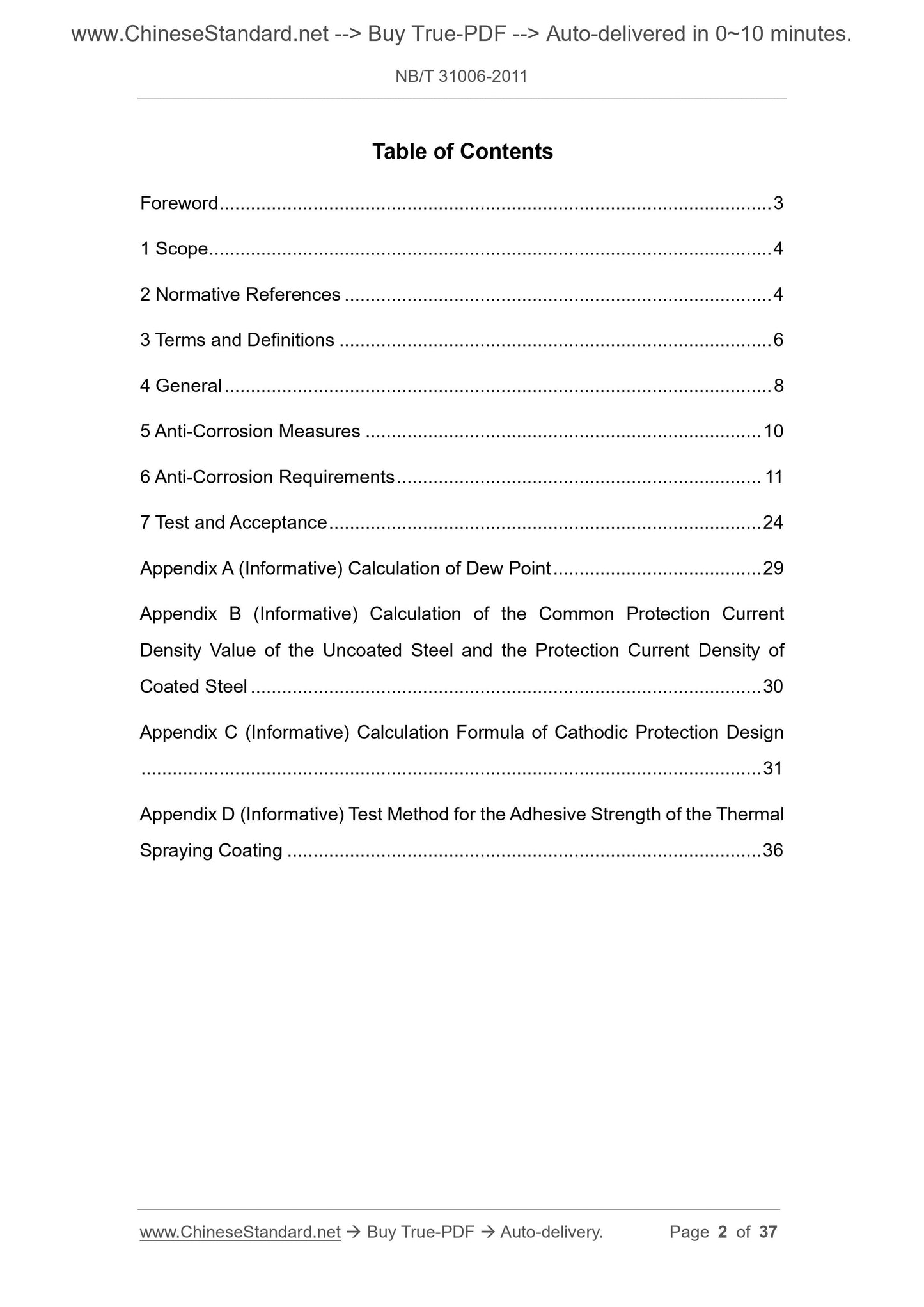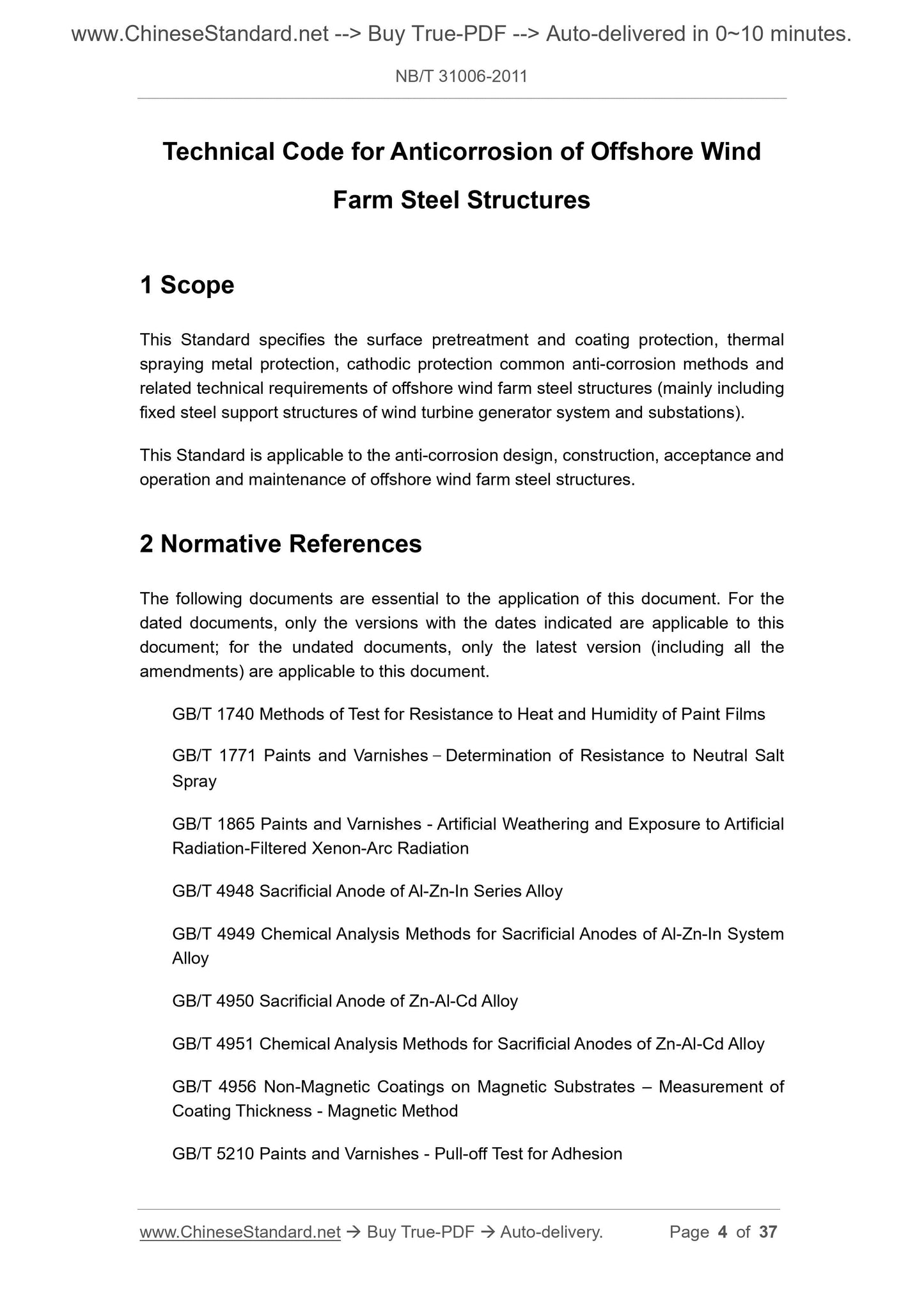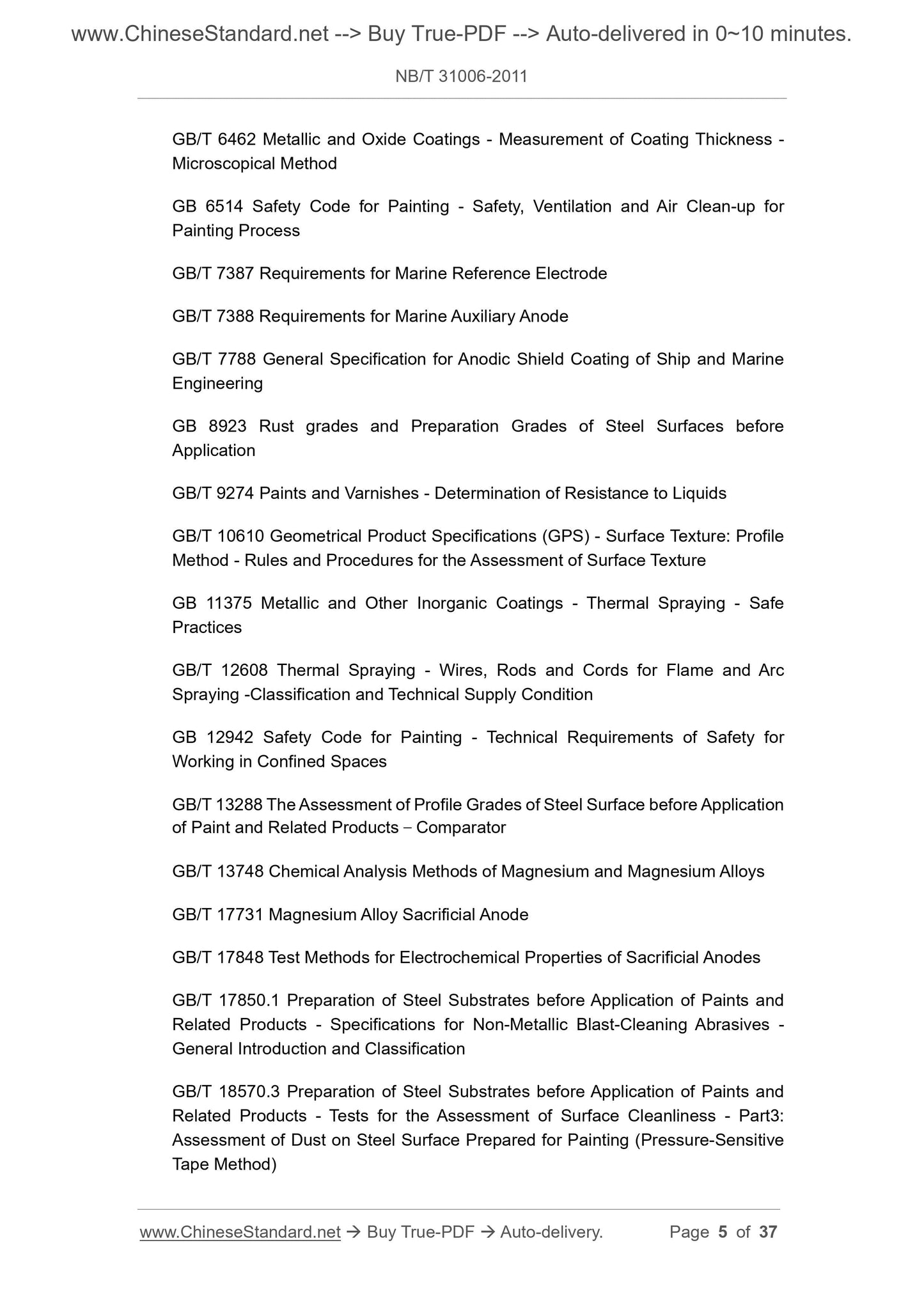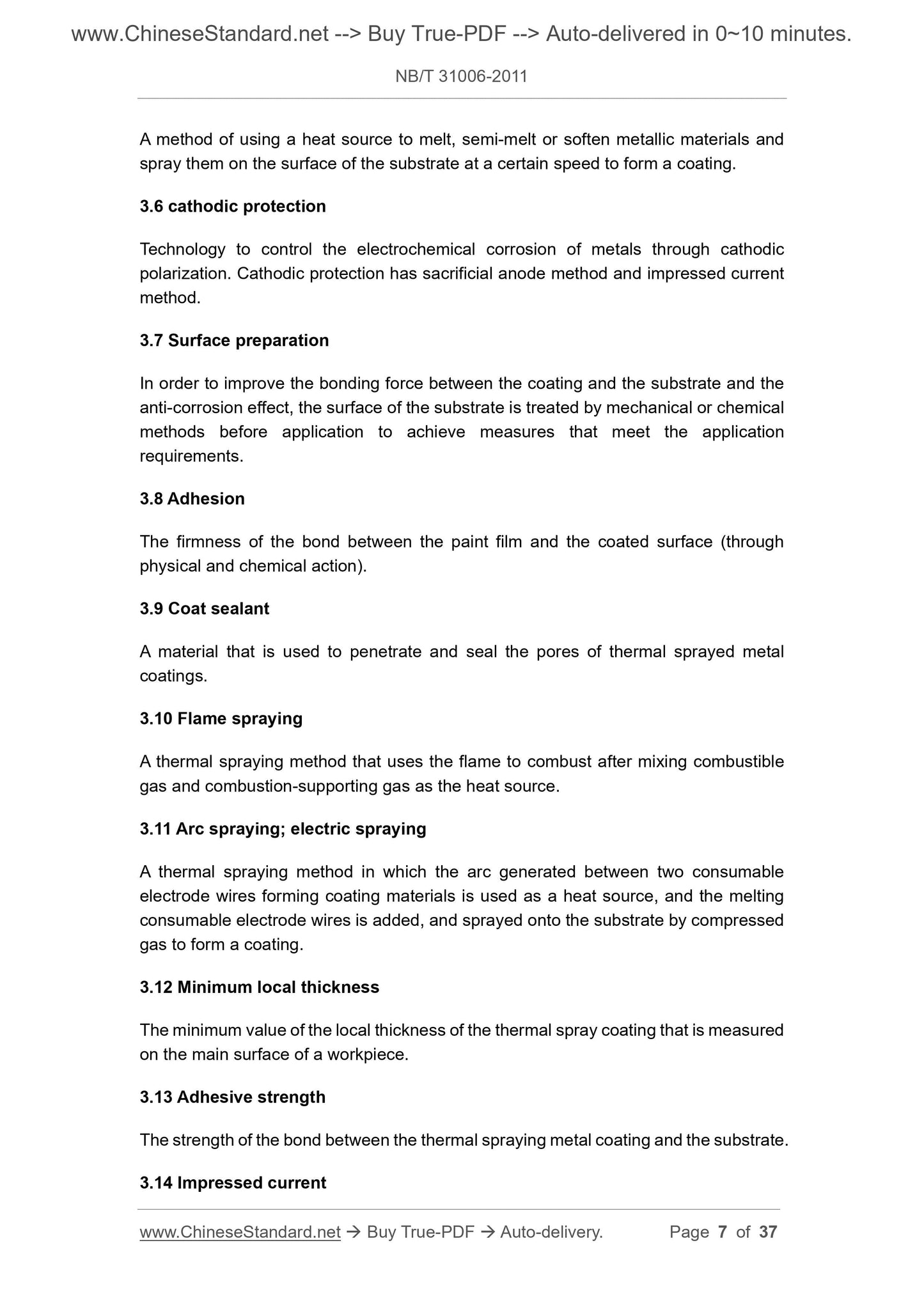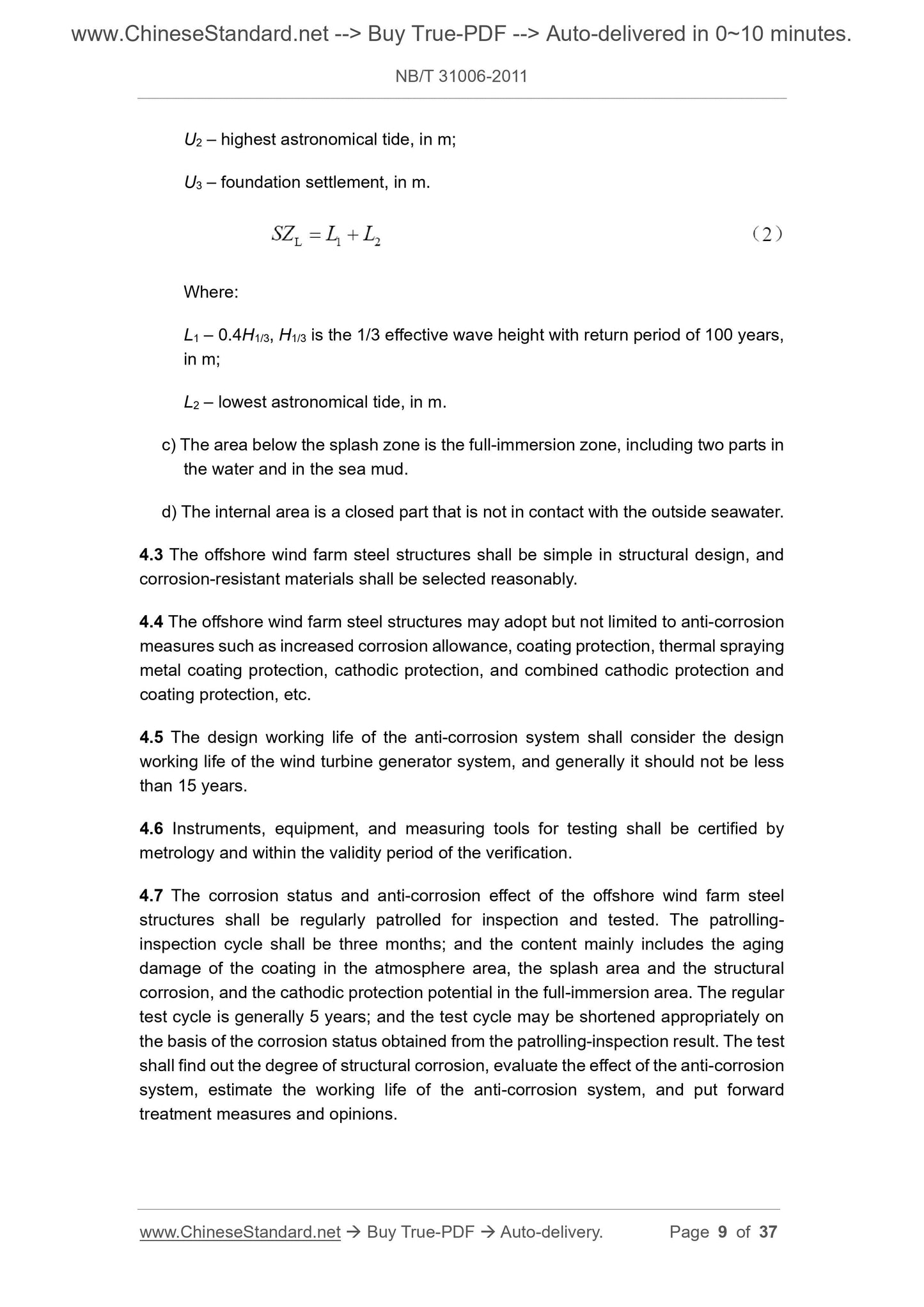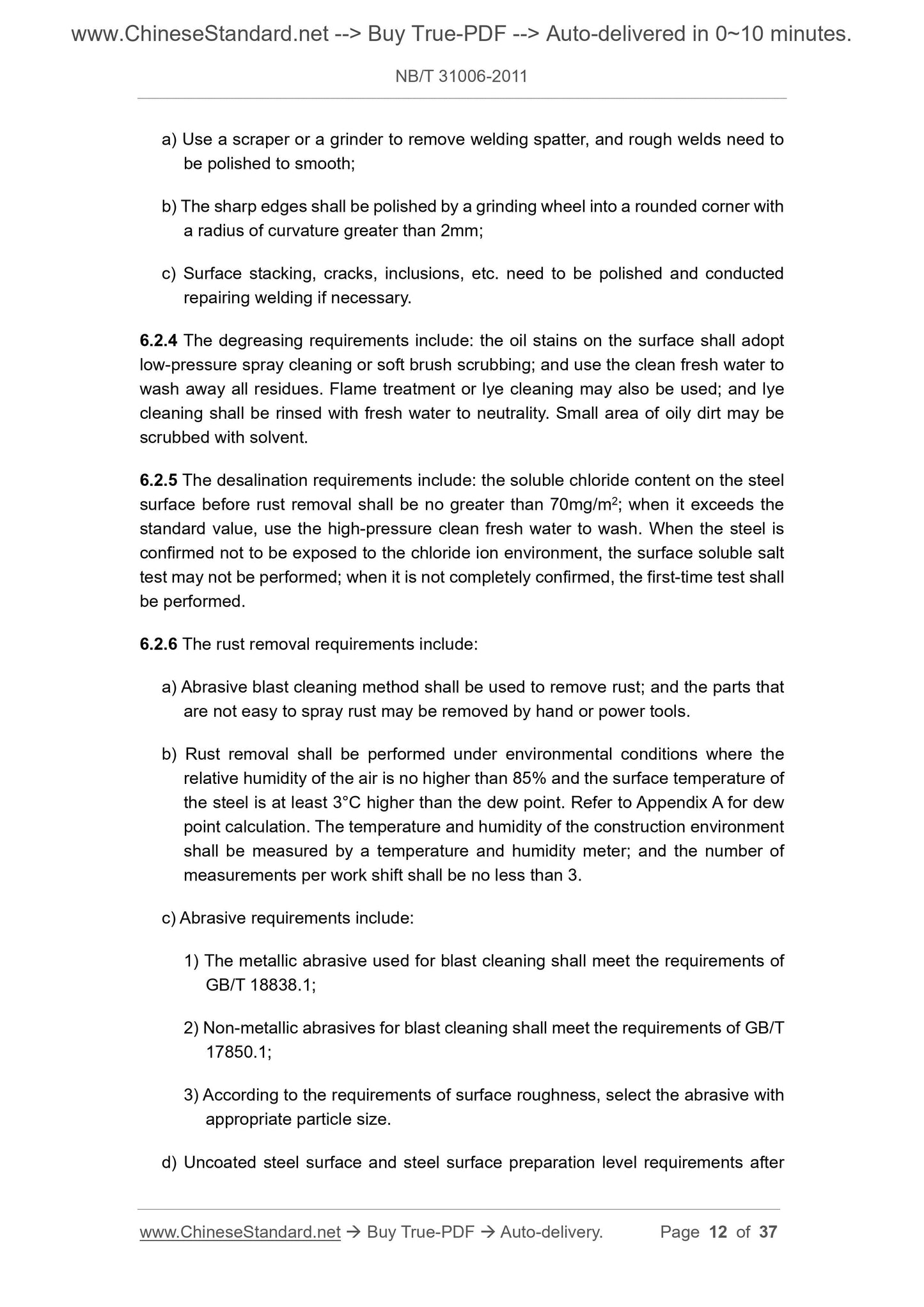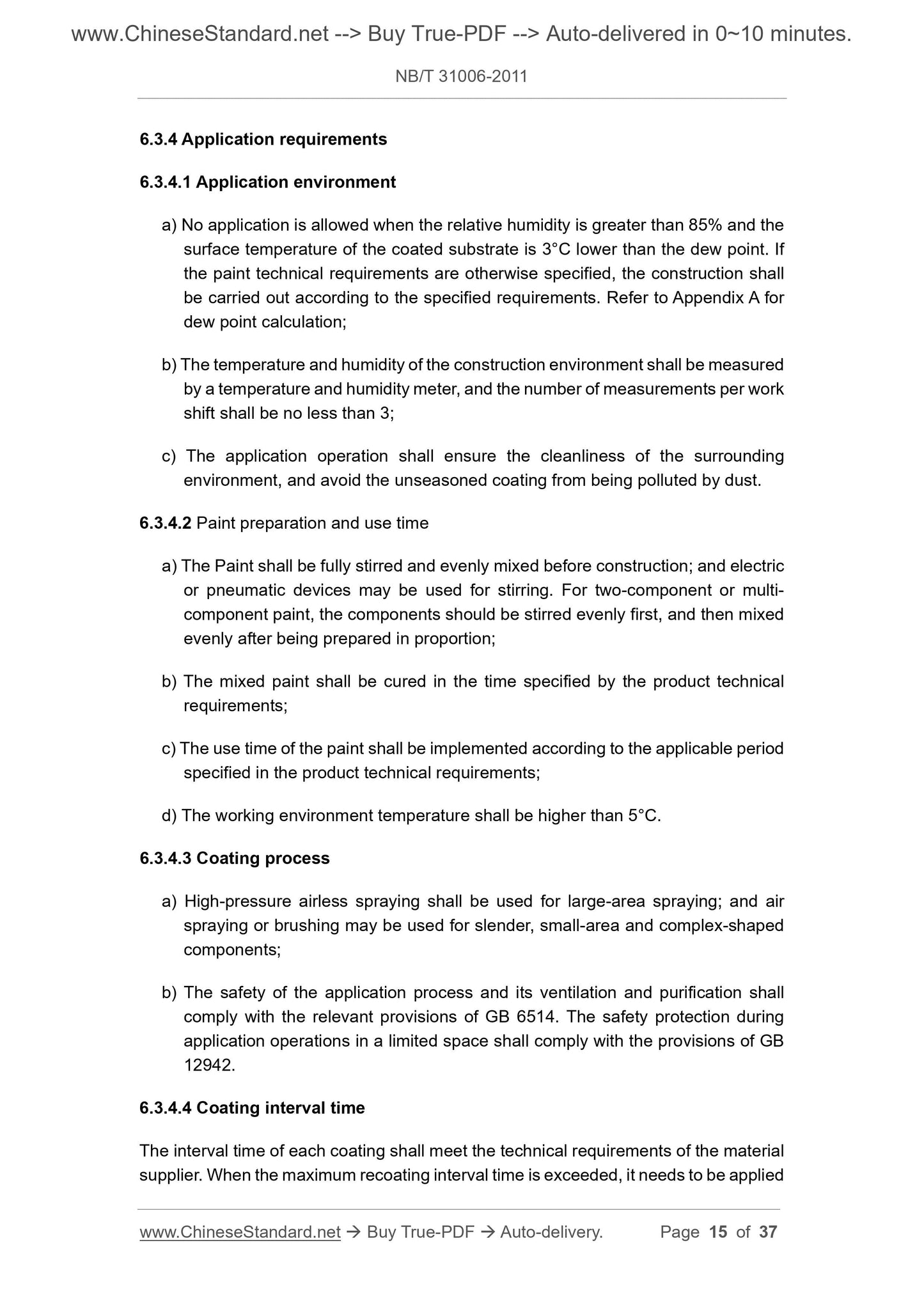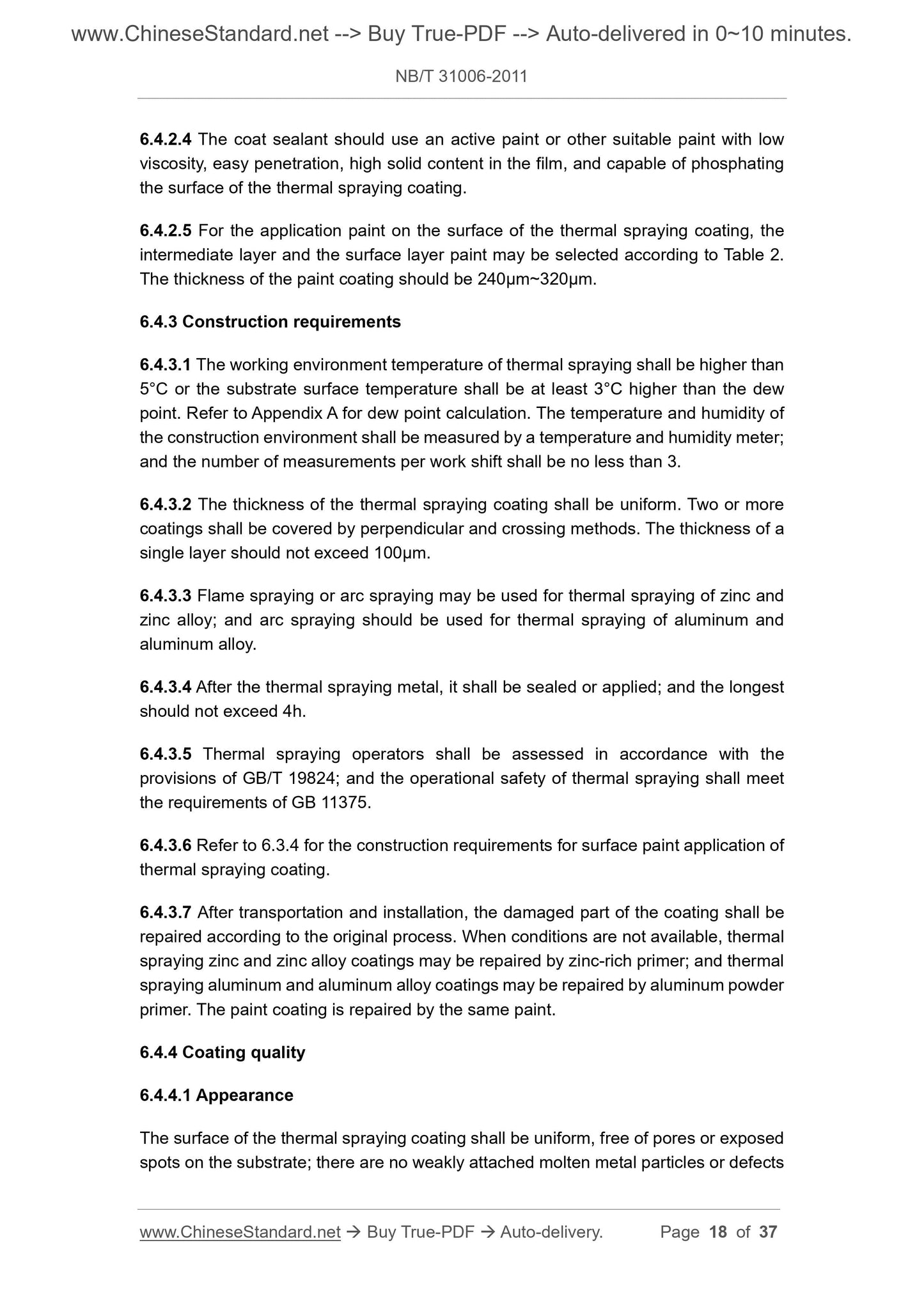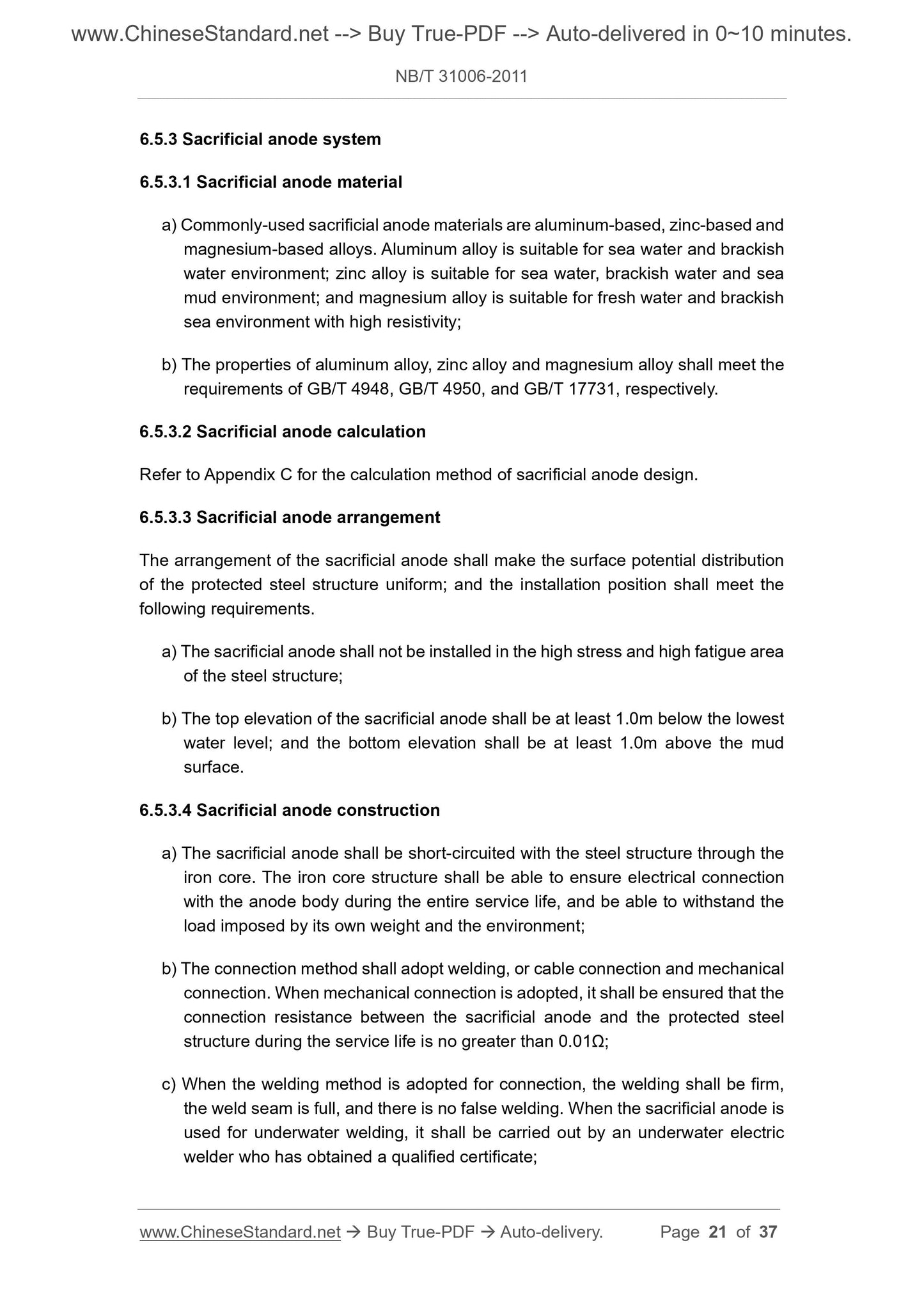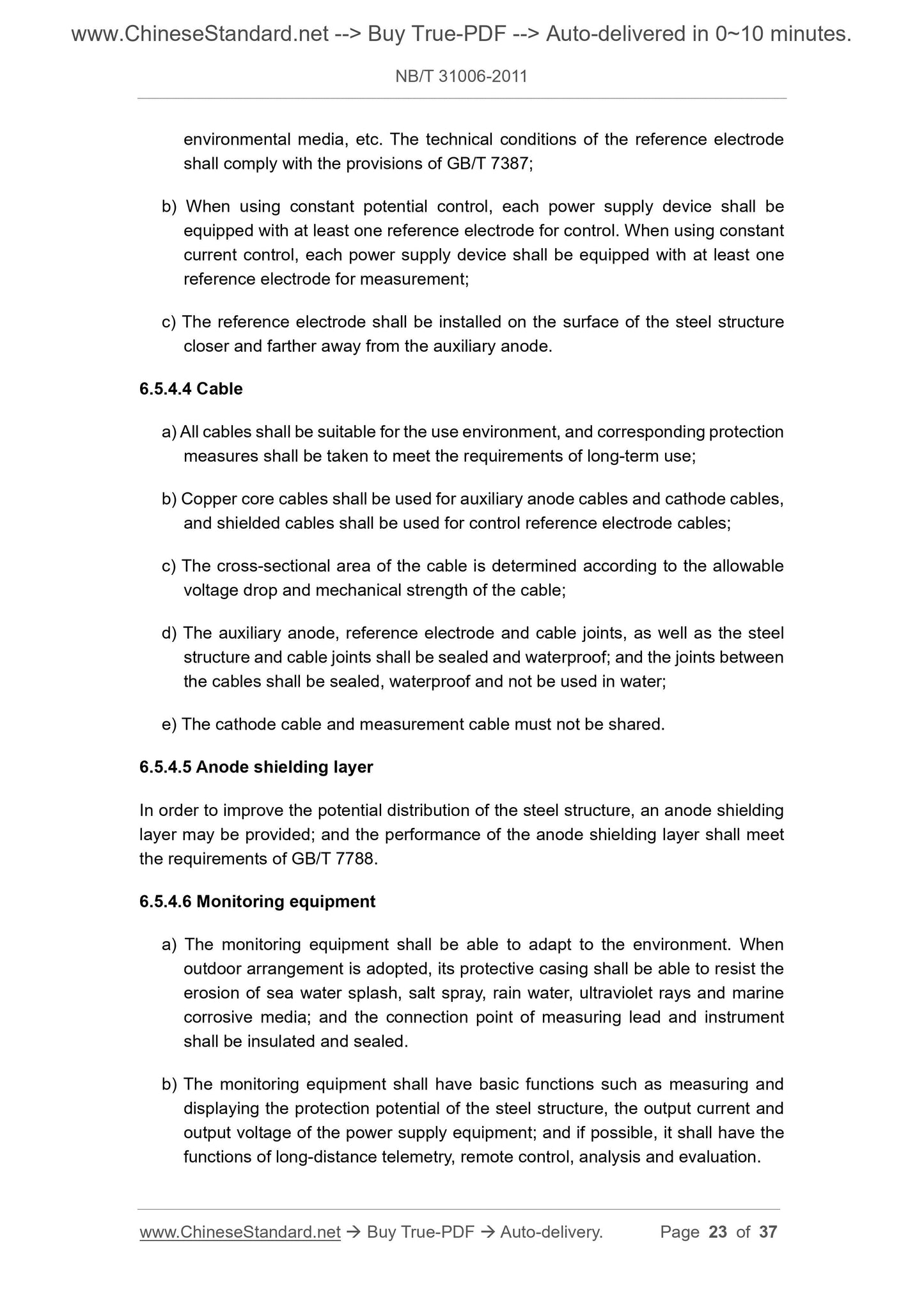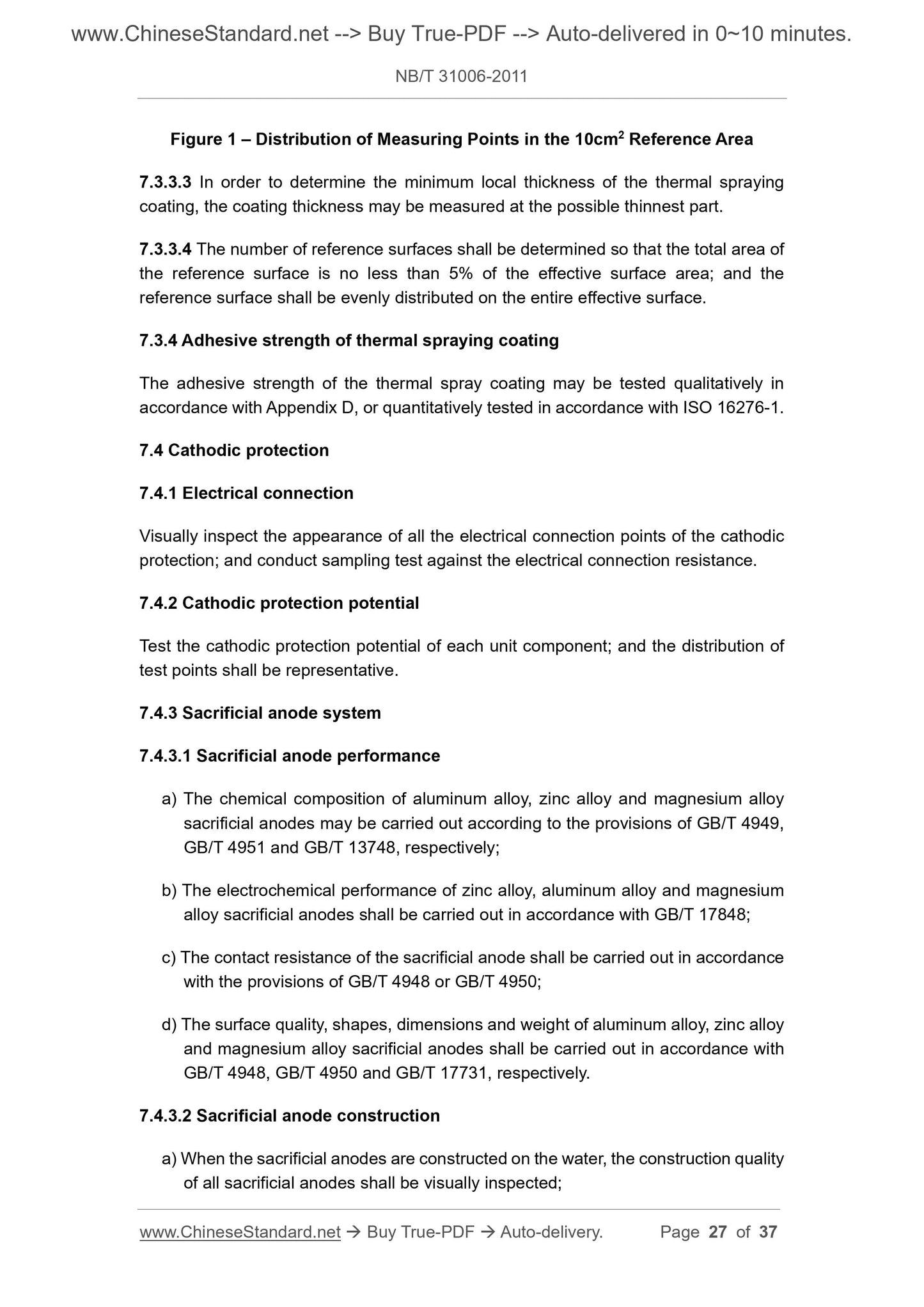1
/
of
12
www.ChineseStandard.us -- Field Test Asia Pte. Ltd.
NB/T 31006-2011 English PDF (NB/T31006-2011)
NB/T 31006-2011 English PDF (NB/T31006-2011)
Regular price
$305.00
Regular price
Sale price
$305.00
Unit price
/
per
Shipping calculated at checkout.
Couldn't load pickup availability
NB/T 31006-2011: Technical Code for Anticorrosion of Offshore Wind Farm Steel Structures
Delivery: 9 seconds. Download (and Email) true-PDF + Invoice.Get Quotation: Click NB/T 31006-2011 (Self-service in 1-minute)
Newer / historical versions: NB/T 31006-2011
Preview True-PDF
Scope
This Standard specifies the surface pretreatment and coating protection, thermalspraying metal protection, cathodic protection common anti-corrosion methods and
related technical requirements of offshore wind farm steel structures (mainly including
fixed steel support structures of wind turbine generator system and substations).
This Standard is applicable to the anti-corrosion design, construction, acceptance and
operation and maintenance of offshore wind farm steel structures.
Basic Data
| Standard ID | NB/T 31006-2011 (NB/T31006-2011) |
| Description (Translated English) | Technical Code for Anticorrosion of Offshore Wind Farm Steel Structures |
| Sector / Industry | Energy Industry Standard (Recommended) |
| Classification of Chinese Standard | F11 |
| Classification of International Standard | 27.180 |
| Word Count Estimation | 25,274 |
| Date of Issue | 2011-08-06 |
| Date of Implementation | 2011-11-01 |
| Quoted Standard | GB/T 1740; GB/T 1771; GB/T 1865; GB/T 4948; GB/T 4949; GB/T 4850; GB/T 4951; GB/T 4956; GB/T 5210; GB/T 6462; GB 6514; GB/T 7387; GB/T 7388; GB/T 7788; GB 8923; GB/T 9274; GB/T 10610; GB 11375; GB/T 12608; GB 12942; GB/T 13288; GB/T 13748; GB/T 17731; GB/T 17848; GB/T 17850.1; GB/T 18570.3; GB/T 18570.6; GB/T 18570.10; GB/T 18838.1; GB/T 19824; ISO 16276-1 |
| Regulation (derived from) | ?National Energy Board Announcement 2011 No.5 |
| Issuing agency(ies) | National Energy Administration |
| Summary | This standard specifies the offshore wind farm steel (including steel support structure fixed wind turbines and substations) surface preparation and coating protection, thermal spraying metal protection, cathodic corrosion protection methods used and the relevant technical requirements. This standard applies to every wind farm labor steel corrosion meter, construction, acceptance and operation and maintenance. |
Share
